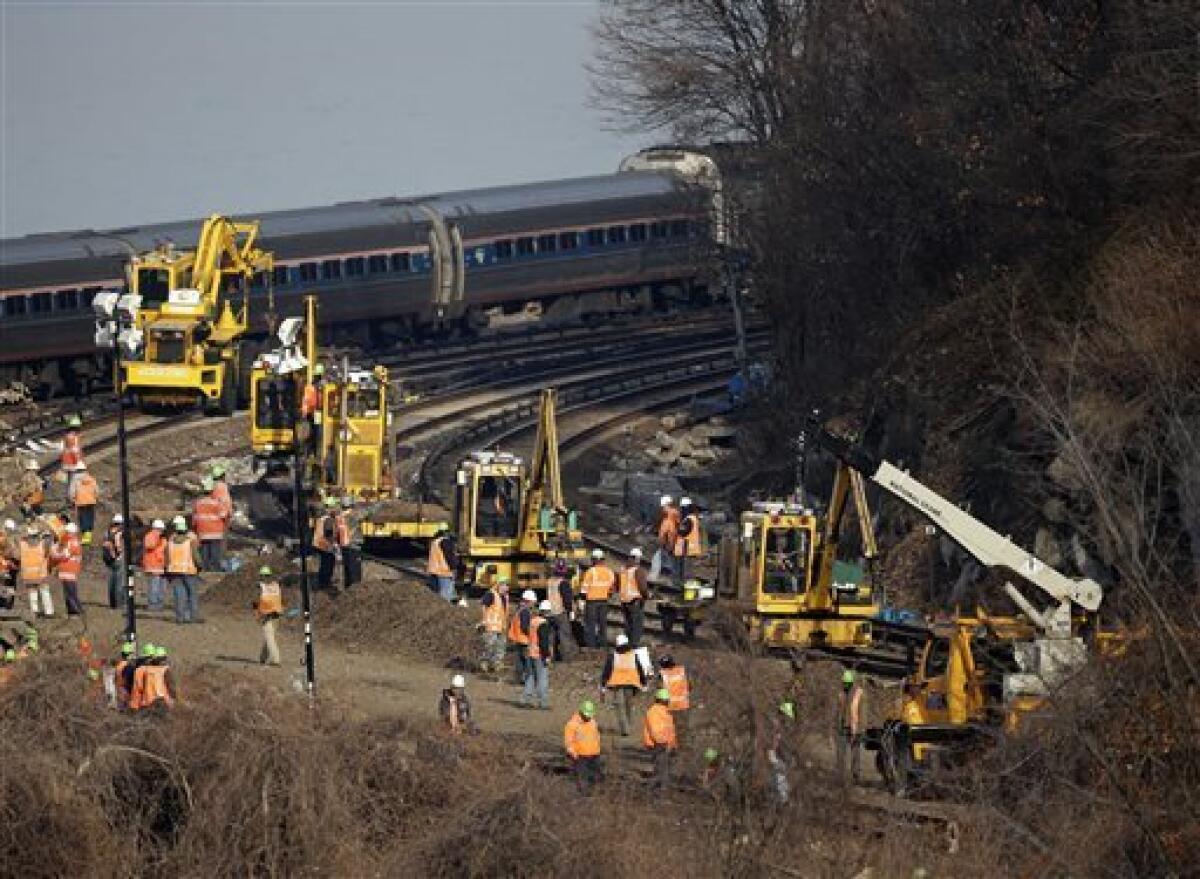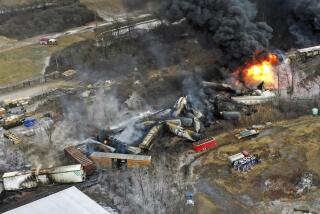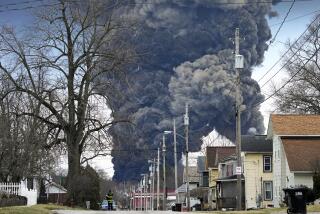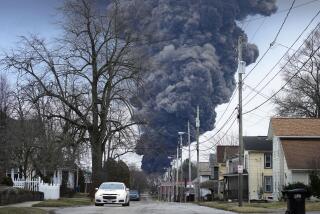N.Y. train derailment: Engineer may have âzoned outâ before crash

NEW YORK - The brakes on a passenger train that sped into a 30-mph curve at 82 mph were functioning normally, and none of the crew tested positive for alcohol, investigators said Tuesday as attention focused on what the engineer was doing at the time of the derailment that left four passengers dead.
National Transportation Safety Board investigator Earl Weener told a news briefing that results of drug tests were not yet available. He said the cellphone of engineer William Rockefeller had not yet been checked to see whether Rockefeller was talking or texting on it.
Weener refused to disclose any details of Rockefellerâs meetings with investigators. Some media have quoted unidentified sources as saying that the Metro-North Railroad employee âzoned outâ before the crash.
Rockefeller was among those injured in Sunday morningâs crash but has been released from the hospital. He has worked for Metro-North, the nationâs second-busiest commuter railroad, for 15 years and has been an engineer for 10 years.
According to Weener, Rockefeller reported for work on schedule at 5:04 a.m. Sunday for Metro-Northâs No. 8808 train, which left Poughkeepsie, N.Y., shortly before 6 a.m. It was his regular route and he had been running it since November, making two round-trip journeys daily for a nine-hour shift.
âThereâs every indication he would have had time to get full restorative sleep,â Weener said.
The head of the rail workers union, Anthony Bottalico, has said Rockefeller has an âimpeccable record.â On Tuesday, however, Bottalico said the engineer had caught himself ânoddingâ at the controls. He âcaught himself, but he caught himself too late,â the union official told the Associated Press.
The local ABC affiliate, WABC-TV, quoted a source as saying that the engineer told investigators he suddenly zoned out during the journey toward Grand Central Terminal. âHe tells us he was not asleep, but he was not fully there, either,â the source said, according to WABC.
When he realized what had happened, Rockefeller âsnapped back,â but it was too late, the source said. The New York Post and New York Times also quoted an unidentified source as saying something similar.
Weener said no details of interviews with the trainâs crew - Rockefeller and three assistant conductors - could be released until all had been interviewed. Weener also said none of the conductors would have been expected to be able to intervene if Rockefeller had suddenly become disabled at the controls.
âThe conductor is not necessarily monitoring the engineer and the performance of the train on a moment-by-moment basis,â he said, noting that the cab in which the engineer rides is designed for one person.
When the NTSB finishes its investigation and issues recommendations, Weener said, it could consider recommending that a co-engineer be on duty to step in during an emergency.
The engineerâs cab contains a âdead manâs pedal,â designed to automatically brake the train when it is not depressed. The engineer keeps the pedal depressed during operation of the train. Weener said it was not yet known whether the pedal on the ill-fated train was depressed in the seconds before the crash.
Four passengers were killed and more than 60 others wounded, several critically, when the train derailed on a sharp curve in the Bronx about 7:20 a.m. Sunday.
Data retrieved from the trainâs event recorders showed the train was going 82 mph when it should have been traveling 30 mph going into the curve. The speed limit on the preceding straight section of the track is 70 mph.
ALSO:
Detroit âneeds help,â is eligible for bankruptcy, judge rules
Medical worker gets 39 years for infecting dozens with hepatitis
Would a proposal calling for taller buildings ruin the Washington, D.C., skyline?
Follow L.A. Times National on Twitter
More to Read
Sign up for Essential California
The most important California stories and recommendations in your inbox every morning.
You may occasionally receive promotional content from the Los Angeles Times.











